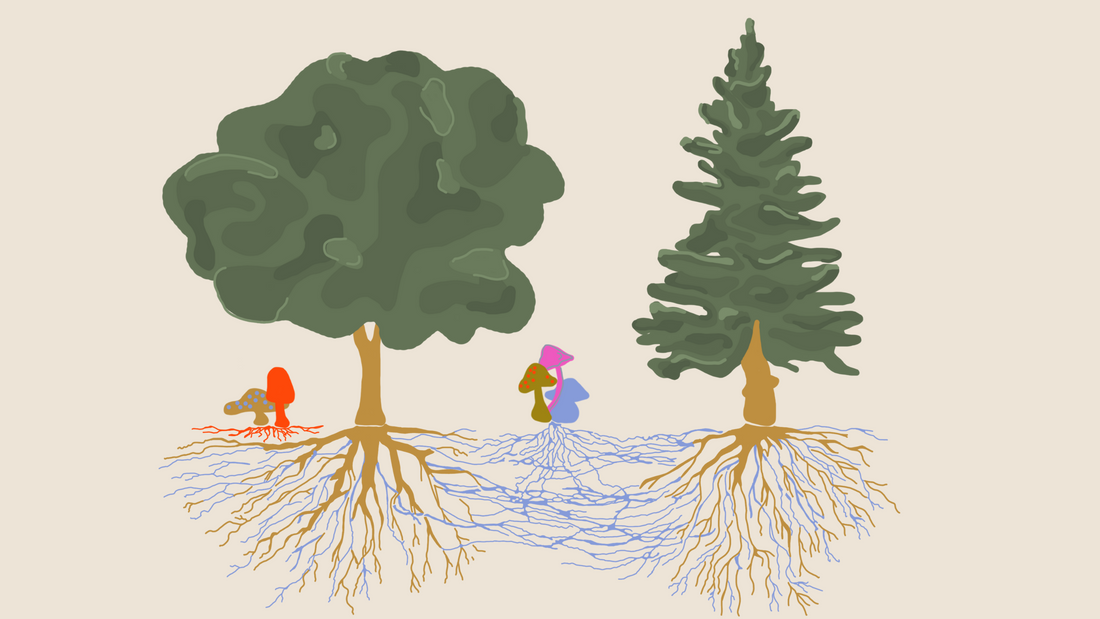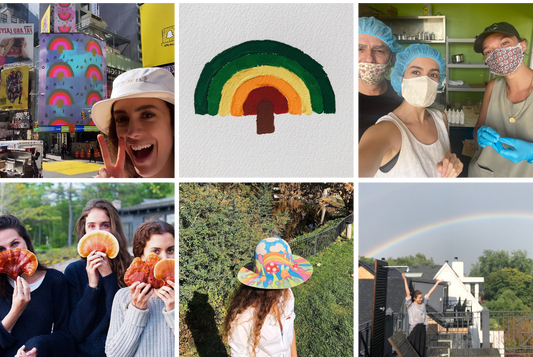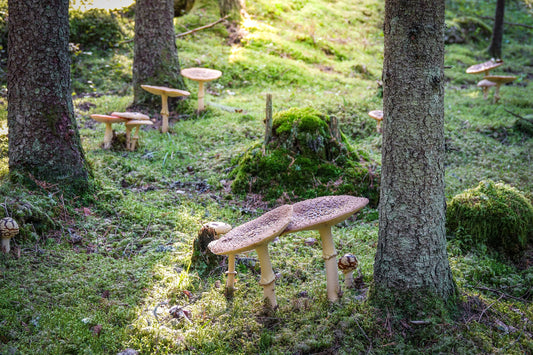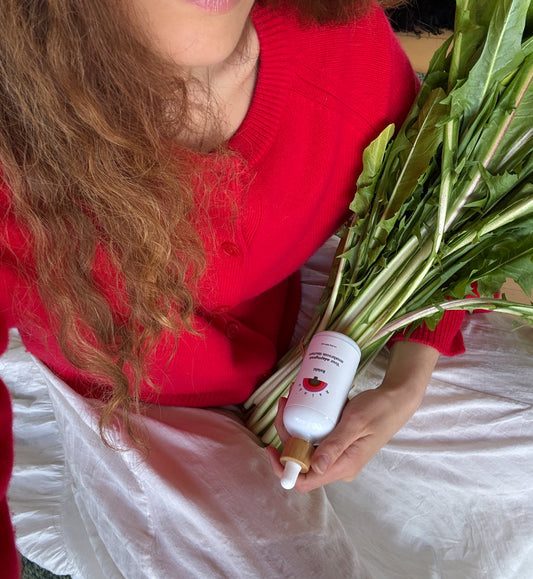The Wood Wide Web
The wood wide web
The internet but, like, organic.
While we are familiar with the World Wide Web - the network of information accessible through the internet - the lesser known Wood Wide Web behaves in similar ways, and exists right beneath our feet. In fact, the Wood Wide Web is vital for the functioning of a healthy ecosystem and, ultimately, the survival of humans around the globe.
What is it?
“Mycorrhiza” literally means fungus-root, and it refers to the symbiotic relationship occurring between fungi and plants within the soil. This is not a new thing - fossils from 400 million years ago show evidence of the plant-fungi relationship. More recently, scientists have explained how this partnership is likely responsible for the colonization of Earth’s first land plants over 470 million years ago. It turns out we have fungi to thank for the “greening” of the dry Earth that created life as we know it. Today, more than 95 percent of terrestrial plants form a symbiotic relationship with mycorrhizal fungi. In this way, individual plants are joined together in an underground root-fungal network that has been termed the wood wide web.
Whether we call it the mycorrhizal fungi network, or the wood wide web, its function remains the same - the transfer of information that enables organisms to communicate and help each other. Not unlike our www.
How do we know?
The Suzanne Simard Tree Experiment
In 1997 forest ecologist Suzanne Simard discovered that trees talk to each other. In a revolutionary experiment, she was able to track the transfer of radioactive carbon gas from one tree to another faraway tree. She demonstrated that Douglas Fir and Paper Birch were communicating with each other. Contrary to the popular belief at the time that every tree in the forest canopy was in Darwinian competition with each other - survival of the fittest - Simard’s experiment showed us that trees, in fact, share resources. Older, healthier trees shuttle carbon and nutrients to younger trees, and those obscured by shade. The direction of transfer can change depending on the season, and which tree is more resource-abundant. She discovered that trees of different species are not only taking caring of each other, but they are favouring their own kin. Trees are capable of recognizing their own saplings! It turns out that they are also able to send warning signals to each other about threats in the environment, resulting in an increase in production of defence enzymes in neighbouring trees. Simard revealed that all this communication is taking place via the network of mycorrhizal fungi in the soil. The fungal web acts as a two-way highway that both sends and receives messages to balance forest resources, recognize kin, and signal for defence.
How does it work?
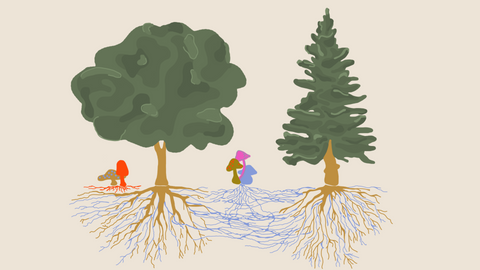
The web of fungi in the soil is ubiquitous - any given handful of soil will contain many kilometres of thin white fungal filaments called hyphae. Mycorrhizal fungi produce a network of hyphae, called mycelium, that weaves through the soil and infiltrates the plant roots at a cellular level. Together, the fungal tissue and plant tissue establish a mutually beneficial relationship. The fungi receive food in the form of carbon-rich sugars produced by plant photosynthesis, while the plants receive both nutrients and water from the fungi that the plant root system would not be able to access otherwise. In this way, the mycorrhizal network acts as an auxiliary digestive organ. The fungal hyphae extend much further than any plant root could alone, exploring the soil, acquiring water and using enzymes to obtain vital nutrients, such as phosphorus and nitrogen to be absorbed by the plants. The network of hyphae also plays a major role in maintaining soil structure, creating soil aggregates which stabilize the soil carbon content, and allow for increased water infiltration.
However, the network does more than just transfer nutrients, carbon and water. The fungi are in constant communication with all the plants and microbes in the soil, and the web facilitates the transfer of information between individual plants. In some sense, the mycelium acts as both the brain and the stomach. When an individual tree is under attack from a pest, it will send chemical signals through the mycorrhizal network to neighbouring trees, notifying them to increase their defence enzymes. The network allows for the trees to both communicate and receive messages about threats or changes to the forest ecosystem so that they can adjust their biology appropriately. A forest is a cooperative system, and this wood wide web is fundamental for cooperation. This underground "social" network grants the entire forest an “ecosystem awareness”. When we tread on the forest floor, they know we are there!
Conceptualizing the forest as a cooperating and communicating system allows us to shift our perspective. We may even begin to think about the consciousness of an ecosystem - if consciousness is thought of as the state of being awake and aware of one's surroundings. Does the vast and complex mycelial web lay the groundwork for a form of consciousness? Analogizing the zeros and ones of computers to the chemical signals traversing the forest floor, the intelligence of the forest is simply expressed in a different language than one we understand.
The health of an ecosystem ultimately depends on symbiotic relationships among organisms, and the wood wide web remains a pillar of the biological Earth we inhabit today.
